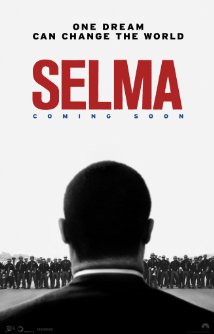Selma is a movie not a documentary. It is a finely crafted film about human conflict and racial tension. For the most part Selma does not fall victim to presenting its main participants in grossly exaggerated characterized form; instead it reveals them as human beings (with understandable faults and weaknesses) trying to navigate life based on their upbringing and beliefs using intuition, hope, fear, positioning and timing as their ally. In the film Selma as in life some succeed, others fail, and many die trying.
Selma when compared and contrasted with the fabric of today’s United States of America, provides a means for its 21st century audience to determine the gains we have made, not made and the ground we have lost on our rights as citizens in the 50 years since its occurrence.
Selma has one portrayal that is somewhat curious to me given the others in the movie are considered to be accurate and true to form. The implication is that this misrepresentation significantly harms an otherwise interesting film and story. The Reverend Dr. Martin King is portrayed as pulling an agitated and frustrated US President Lyndon Baines Johnson along on the issue of Voter Rights. The record and first-hand participants clearly show the opposite to be true.
It is a matter of record (NY Times December 1964 before King and Johnson met) that Johnson talked about the possibility of “a new law that would allow all voters to register at Post Offices.” During their first meeting Johnson did tell King the legislation would have to wait until the timing was right – in that it needed justice department backing and would not fall victim to a filibuster. A few days after meeting with King, Johnson promised is his January 4th State of the Union Address “to remove all remaining obstacles to the right to vote.” During this period Johnson had the Justice department put together the support for this legislation. The Selma protests started on January 14th with the first attempt at the walk occurring on March 7th. Before the first attempt at the walk, on January 15th, Johnson and King talked and Johnson encouraged King to push for Voter Rights. King and Johnson met again in Washington on Feb. 9, and Johnson insisted that King tell the press that the President was going to submit a voting-rights bill. The newspapers not only confirmed this the next day, but also added that the two men had discussed the use of federal registrars, an end to literacy tests and focusing on the most discriminatory areas in the South. They were, in short, agreeing upon the eventual solution to the crisis. Why were these aspects not included the narrative story-line? It would have made for fascinating drama in a sub-plot, and enhance a film trying to portray difficult choices and picking the right time to stand and fight.
In the end, Selma is a film not a documentary and its creators have the right to choose the narrative. For dramatic purposes it includes a fictionalized sub-plot story line about the relationship between two men and events that play a huge role in determining America’s future.
